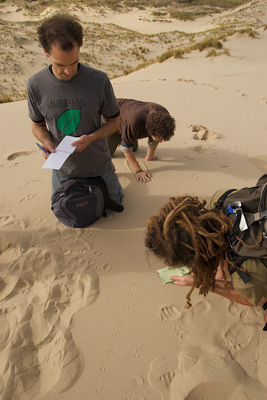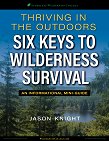Coyote Teaching

Coyote teaching is a phrase popularized by Tom Brown Jr. and Jon Young. Similar teaching methods however, have been used by indigenous people, philosophers, psychologists, and wise individuals all over the world. A “coyote teacher” is one who encourages the student to delve deeper into the mystery at hand, rather than ending the learning process by providing a quick answer.
This form of teaching is most effective with a student that you are in a mentoring relationship with. Trust between the student and the teacher is a crucial ingredient to success. This kind of teaching happens when a teacher is hyperaware of their student and knows their students’ knowledge base, personality, comfort zones, desires, current mood, family situation, upbringing, etc. Using this abundance of knowledge, the teacher can creatively challenge and inspire their student to look deeper. The more you know about the student, the more effective you will be as a coyote teacher. The most common failure I have seen (and caused) with this form of teaching happens when the teacher does not know the student well enough, or is not aware enough of how the student is doing in that moment.

One aspect of this kind of teaching, in certain situations, is withholding an answer from an eager student and forcing them to look closer. This can obviously cause problems with a student who is impatient, not in the mood, or has become accustomed to quick and easy answers. It is a balancing act to use this technique with students who are paying money for a class. They may feel that they aren’t getting their money’s worth if they don’t get all of their questions answered immediately. One of my great mentors, Dan Gardoqui (White Pine Programs) would navigate this slippery terrain with one simple line: “Do you want me to tell you the answer or do you want to look it up for yourself?” If I wanted the answer right there and then, he’d tell me – thus earning my trust. At the same time, he was challenging me to put in the hard work.
Be More Prepared For Your Next Outdoor Adventure!

Don't leave home without knowing these six essential survival skills. Our free survival mini guide reveals the strategies of:
- Shelter & fire to prevent the number one cause of death
- Obtaining clean water to avoid life-threatening dehydration
- Common wild survival foods and other critical skills!

Let me paint a picture of a successful coyote teaching
scenario:
A group of students are walking along the beach and they come across some tracks. Before anyone talks about the tracks the teacher asks them to take a minute and just look at them. Then the teacher asks someone to say what they see (but NOT what the animal is). One student says “I see 5 toes” another student says “I see long claws and a triangular heel pad”. Now before anyone can say the answer, the teacher has the students follow the trail. It leads them down the beach and to a dumpster where it chewed up a greasy paper bag. Then it leads to a small scat with blunt ends that is full of insect parts. Finally they lose the trail and discuss their findings. What was the animal? A skunk! Rather than tell everyone who made the tracks at the very beginning, the mystery was kept alive and the students were forced to remain engaged until the end of the trail.
You can see that by tactfully holding out on some answers, it can greatly enhance the learning experience.
So how does one learn to be a coyote teacher? In my opinion, it is very simple.
Step 1: Develop yourself. Practice your skills, do sit spots, look-up mysteries, expand your awareness, do the things that ignite that feeling of inspiration inside yourself.
Step 2: Have genuine relationships with people.
The majority of teaching is role-modeling. All of my favorite teachers were people who were always striving to improve themselves, always looking for answers to things, looking for creative solutions to problems with an open mind and then they “gave their gifts” to me just by being my friend. They reached out by inviting me over or asked me to babysit their kids. To me this is true coyote teaching and what mentoring is all about.
By the way, when you're spending more time in nature it's important to know how to stay safe in the outdoors, especially if you were to get lost. Right now you can get a free copy of our mini survival guide here, where you'll discover six key strategies for outdoor emergencies, plus often-overlooked survival tips.
Additional Resources on Coyote Teaching
Recommended Books:
Coyote's Guide by Young, McGown and Haas
Related Resources:
Check out this article by Matt Ball about the Coyote Method
Check out our Outdoor Education Courses

About the Author: Connor O'Malley is an experienced wilderness skills educator. He taught at Alderleaf for several years. Learn more about Connor O'Malley.
Return from Coyote Teaching back to Outdoor Education Articles
Is The Essential Wilderness Survival Skills Course Right for You? Take the "Online Survival Training Readiness" Quiz
See for yourself if this eye-opening course is a good fit for you. It takes just a few minutes! Get your Survival Training Readiness Score Now!

Grow Your Outdoor Skills! Get monthly updates on new wilderness skills, upcoming courses, and special opportunities. Join the free Alderleaf eNews and as a welcome gift you'll get a copy of our Mini Survival Guide.

 The Six Keys to Survival: Get a free copy of our survival mini-guide and monthly tips!
The Six Keys to Survival: Get a free copy of our survival mini-guide and monthly tips!
Learn more